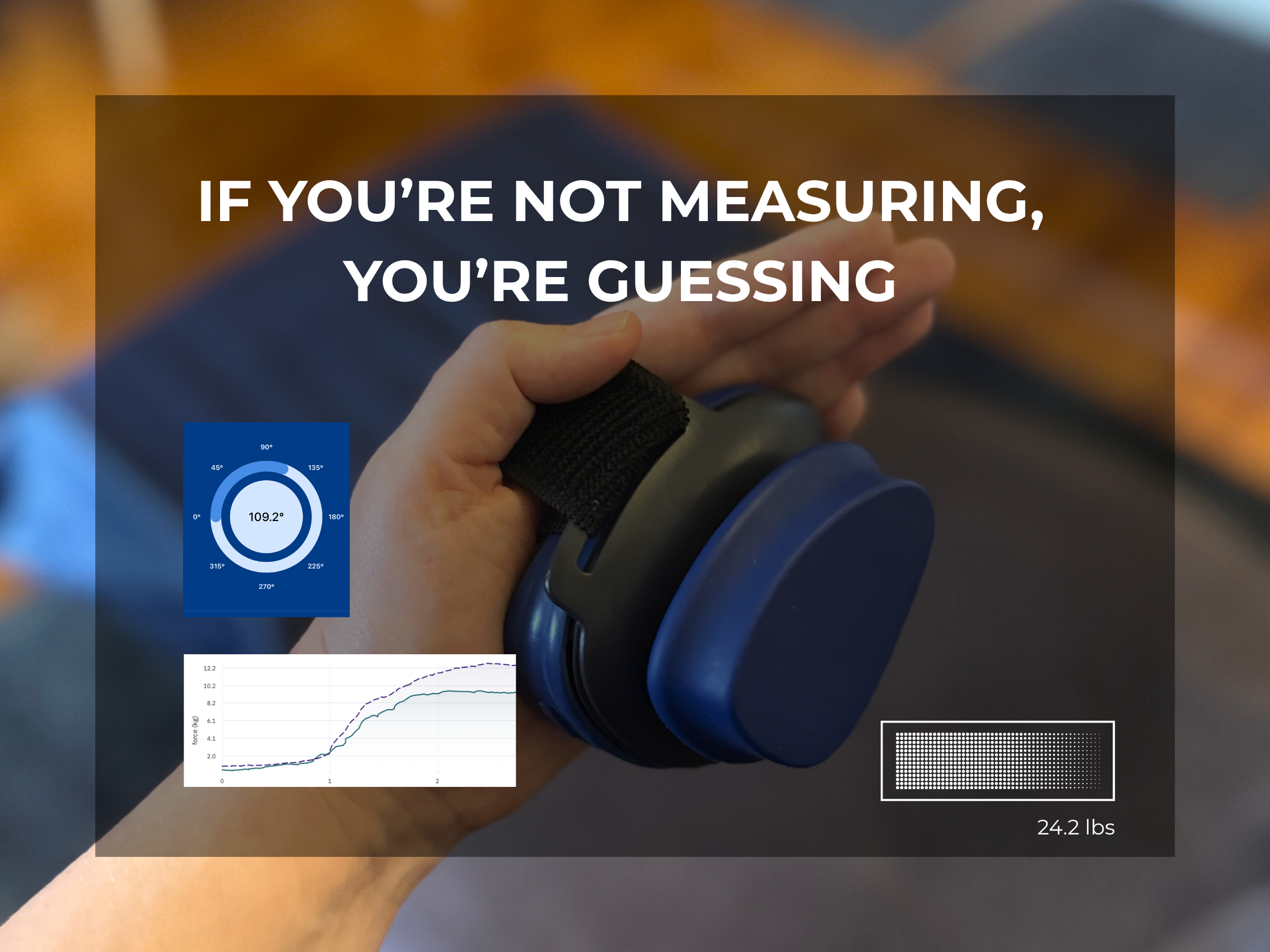Why digital measurement tools help you see real progress & why your practitioner should be using one
When progress feels slow - but change is happening
If you’re ever been getting treatment for an injury, or working through a rehab program, you’ve probably had moments where it felt like nothing was improving. Maybe your pain levels felt like they hadn’t shifted much, or you still felt really tight and restricted - even though you’ve been showing up, doing your exercises and following your therapist’s advice.
Here’s the thing… progress is not always something you can feel right away and it is very rarely linear. So how do we track if what we’re doing is actually working? That’s where digital measurement tools like a dynamometer come in.
By taking objective measurements of muscle strength, rate of motion or grip stretch, a digital device provides a reliable and independent source of truth about how your body is responding to treatment. Even when your day-to-day sensation don’t feel like they’re changing, there can be deeper improvement happening beneath the surface. A dynamometer helps us measure those improvements.
Why measure progress in manual therapy?
Manual therapy (and Myotherapy in particular) is about restoring function, mobility and comfort - but it’s also about building awareness of your body. While your practitioner can feel improvements in muscle tone, or joint mobility, it can be hard for you to see that progress unless there’s something concrete to compare to.
That’s where measurable outcomes come in.
Objective data turns your progress into something you can see, track and celebrate. It helps shift our focus from “I think it’s getting better” to “I know it’s getting better”.
Why Digital Measurement is the Future of Manual Therapy
It provides reliable objective data
Digitaltools remove the guesswork. Instead of estimating your approximate range of motion, we can get a numerical value for your range (or your strength). This gives both you and your therapist a consistent, unbiased picture of what’s changing over time.
This means we’re not relying solely on how something feels (which can vary with fatigue, stress or sleep), but on measurable factual data.
It helps track small but meaningful improvements
Sometimes, progress happens slowly - especially in injury recovery or long-term rehabilitation. A few newtons of increased force might not feel like much, but they signal that your muscles and adapting and healing.
Over weeks or months, these small changes add up - and a digital record lets you see that upward trend clearly.
It keeps you motivated
Seeing numbers improve over time can be incredibly motivating. That’s why we all love the data from our Apple Watches and our wearable fitness trackers - it’s fun watching metrics change over time. When you can visually compare where you started to where you are now, it builds confidence and reinforces that your effort is paying off - even on the tough days.
It strengthens communication between you and your practitioner
When your practitioner says; “It’s getting better”, that’s encouraging - but when they can show you the data to back it up - it becomes even more real.
Objective data allows for transparent, collaborative discussions about your progress, and helps guide decisions about treatment plans and adjustments to exercise programs.
It enhances treatment accuracy
By tracking measurable outcomes, your practitioner can fine-tune your program with even greater precision - knowledge is power. This helps ensure you treatment remains targeted, balanced and effective, especially in your goals involve returning to sport or improving function after an injury.
Why ‘Feeling Better’ Isn’t Always the Full Story
Pain and perception are complex. Sometimes your nervous system perceives danger, even though your tissues have healed from their injury and strength is returning. Other times, you might feel better, before your strength and mobility changes have caught up.
A digital measurement tool bridges this gap by providing an independent, reliable measure that doesn’t rely solely on feeling or opinion.
When both patient and practitioner can see the same data, it fosters mutual trust. You’re no longer just taking your therapist’s word that you’re improving - you’re seeing the numbers yourself. It’s also a great way to celebrate milestones - one’s that are solely focus on your pain.
Progress you can see
Using digital tools like a dynamometer isn’t about replacing the hands-on skill of your practitioner - it’s about enhancing it.
Healing doesn’t always feel linear - some weeks feel like leaps forward, others like standing still, maybe even regressing. But with measuring tools, you can see proof of progress even of the days you can’t feel it.
It’s about giving you a clear, objective view of your own strength and resilience as you move forward.

